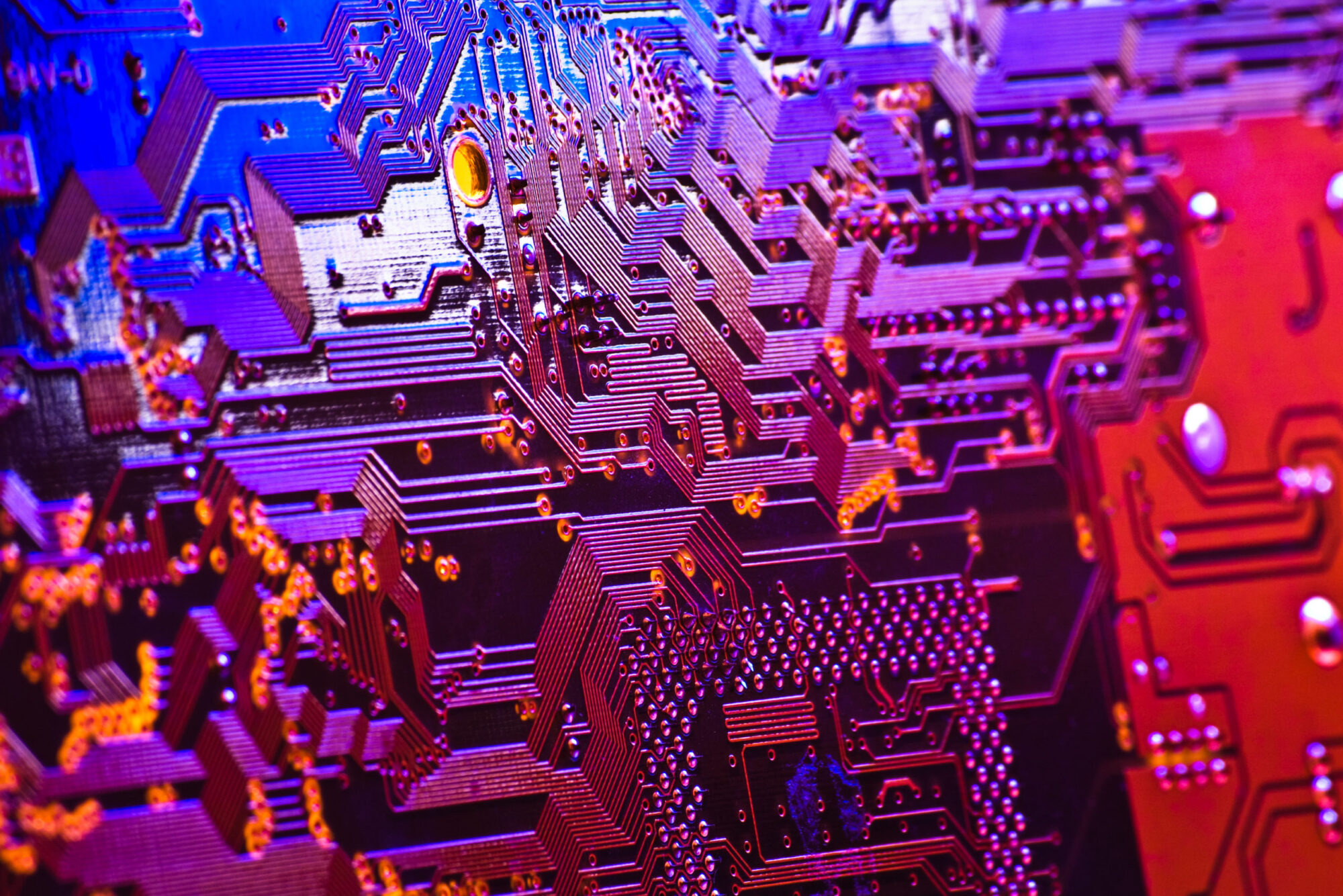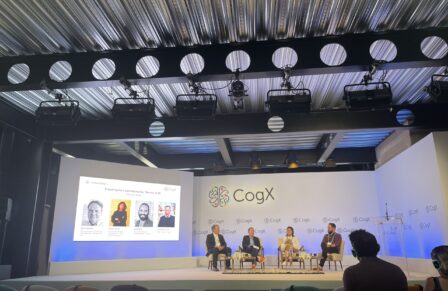Nanophotonics – Combining Photonics and Nanotechnology to catalyse innovation
Posted 9 Jan 2023
Nanophotonics – Combining Photonics and Nanotechnology to catalyse innovation
Dr Cillian McPolin is a photonics technologist at Digital Catapult, working to accelerate the adoption of photonics and nanotechnology.
The last two instalments of the ‘Smart Manufacturing’ series discussed photonics and nanotechnology – these fields are crucial to many sectors, including communication, medicine, defence, energy and manufacturing. The direct overlap of these two technology areas is the domain of nanophotonics, where light is confined and manipulated on the nanoscale, thus enabling new functionalities for a multitude of applications, not least in manufacturing.
Nanophotonics is a highly active area in which the UK plays a leading research role, with numerous academic labs and successful spin-out companies. Many opportunities lie ahead for future commercialisation, especially in the areas of energy, medical technologies and data. Applications for nanophotonics range from novel metrology tools, more efficient solar cells and smaller footprint LiDAR, to neuromorphic computing, photonic integrated circuits and compact AR/VR glasses. Moreover, nanophotonics will become increasingly important to manufacturing, such as with regard to the assembly of nanostructures/nanomaterials, high-speed nanoimaging for process control, and component testing.
Conventional approaches to controlling light cannot be used on the nanoscale – a consequence of the diffraction limit – and thus other architectures and materials are required. Nanophotonic components may thus be realised via metal- (plasmonic) and dielectric-based approaches, using a range of architectures, such as nanoantennas, metamaterials/metasurfaces and photonic crystals. The selection of materials and geometries is application-specific. For example, the ultrahigh confinement of light by plasmonic nanostructures is especially advantageous for sensing.
Sensing and Metrology
As addressed in the previous ‘Smart Manufacturing’ instalments, sensing is one of the most fertile grounds for photonics and nanotechnology due to the wide range of physical, chemical and biological parameters that can be effectively sensed and monitored – from pressure to pH. Nanophotonic sensors in particular offer many benefits, for example surface-enhanced Raman spectroscopy can harness the confinement of light by plasmonic nanostructures for highly sensitive molecular sensing. A related class of nanophotonic sensor relies on the spectral response of plasmonic structures, which is altered by the presence of molecules. Sensing systems based on such wavelength shifts are already commercially available (i.e. surface plasmon resonance – SPR) and are suited to label-free bio- and chemical sensing. Another familiar example can be seen in pregnancy tests that exploit the aggregation of metal nanoparticles to produce a colour change.
Another instance relates to the detection of infrared light, which is central to numerous applications, such as communication and imaging. Silicon cannot be used for infrared photodetection at energies below its bandgap, hence other, more costly materials are often used. However, hybrid nanophotonic photodetectors, combining silicon with nanostructured metals, can enable effective infrared detection and facilitate direct integration on a silicon platform. In addition, nanophotonics may also be employed in realising more compact metrology instruments for smart manufacturing, enabling integrated and cheaper measurement tools. Looking ahead, many other sensing areas may utilise nanophotonic architectures, e.g. quantum plasmonic sensing for greater sensitivities and nanostructured optical fibre sensors for new functionalities.
Data, Communication and Computing
Nanophotonics also finds a plethora of applications in data and communication. For instance, next generation hard drives that employ heat-assisted magnetic recording rely upon the confinement of light to the nanoscale via plasmonic nanostructures. This process locally heats a small region of the medium before writing, allowing a smaller bit size and consequently higher density of data storage. Nanophotonic structures, such as cavities, may also enable efficient, on-chip single-photon sources for quantum cryptography and computing. In terms of processing, neuromorphic computing, emulating the human brain, may also be based on nanophotonic architectures, offering high speeds and energy efficiencies. Furthermore, photonic integrated circuits incorporate a multitude of photonic components onto a chip, enabling compact, high-performance devices for a wide range of applications, such as communication and sensing.
Medicine
Nanophotonics may also play an important role in medicine, such as in the treatment of cancer. For instance, nanoparticles can be employed in cancer treatment: this entails illuminating nanoparticles that are adjacent to the cancerous region, resulting in a plasmonic excitation that produces heat, allowing the targeted destruction of the cancerous cells. Point-of-care diagnostic biosensors (e.g. SPR, and silicon-based sensors) is another key example – nanophotonic technology could be employed in portable devices and provide avenues towards personalised medicine.
Energy
Energy is another major application area for nanophotonic technology, addressing the challenges of Net Zero via enhancing the production of energy, as well as reducing its consumption. This includes increasing the performance of solar cells via greater coupling and trapping of light with nanostructures, thereby augmenting the energy conversion efficiency and allowing thinner cells that are cheaper to produce. Radiative cooling using nanophotonic architectures is another avenue being developed – passive cooling systems using tailored nanostructures greatly reduce energy requirements for air conditioning. Nanophotonics can also be employed in hydrogen production: for example, ammonia, which is more easily transported and stored, can be broken down into hydrogen and nitrogen via the use of plasmonic photocatalysts. In addition, nanophotonics also plays a role in boosting the efficiency of light sources: incorporating nanoparticles into LEDs is a means of enhancing light extraction.
Future of Nanophotonics: Smart Nano NI
Nanophotonics offers a multitude of promising avenues for many technologies by allowing the control of light on the nanoscale, especially in the areas of sensing, data, medicine and energy – a few standout examples have been covered here, with many more in development. Whilst there is much work to be done in terms of research and product development, nanophotonic technology is successfully making the jump from the lab to real-world devices. In the coming years, high-volume production and cheaper materials, together with greater integration, will be crucial. Additionally, there is also rich overlap and linkage with other advanced technologies, in particular the Internet of Things, quantum technologies and AI, such as in the case of nanophotonic sensors, on-chip single-photon sources and nanophotonics-enabled artificial neural networks, respectively. The UK is a global leader in nanophotonics and the Smart Nano NI project will accelerate the development of new technologies in this field, going from designs to prototypes to products, with ever widening areas of application.
If you are interested in finding out more about nanophotonics and how Digital Catapult’s Smart Nano NI acceleration programme can benefit your business, contact Dr Cillian McPolin [email protected]




